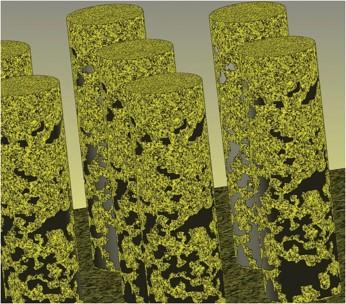
Snapshot of steady‐state supported lipid bilayer profiles in an array of 17 µm tall pillars. There is preferential adsorption of lipid vesicles near the pillar tops, coupled with diffusive transport of lipid bilayer and bilayer fragments on pillar surfaces.
Scientific Achievement
We describe how the confinement of lipid vesicles in micropillar arrays can result in the formation of nonuniform lipid membranes.
Significance and Impact
A better understanding of membrane formation at the microscale will aid in advancing disease detection, drug discovery and tissue engineering.




